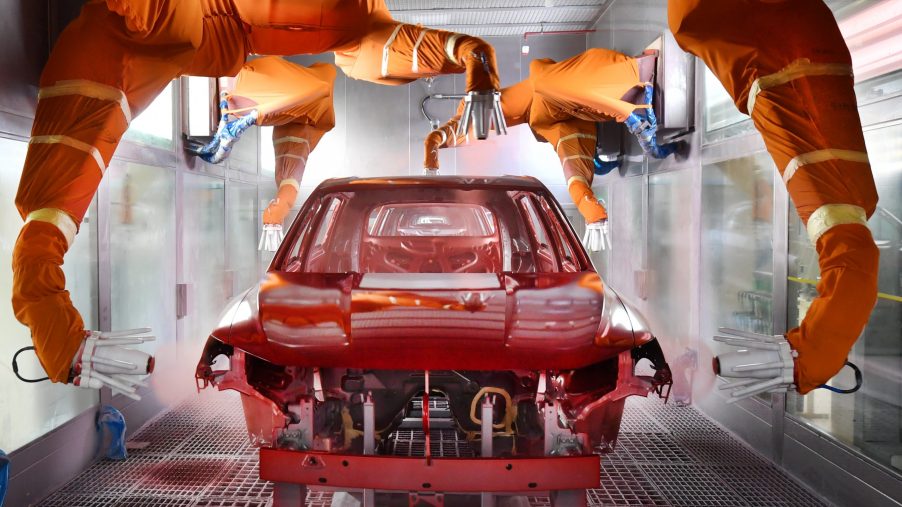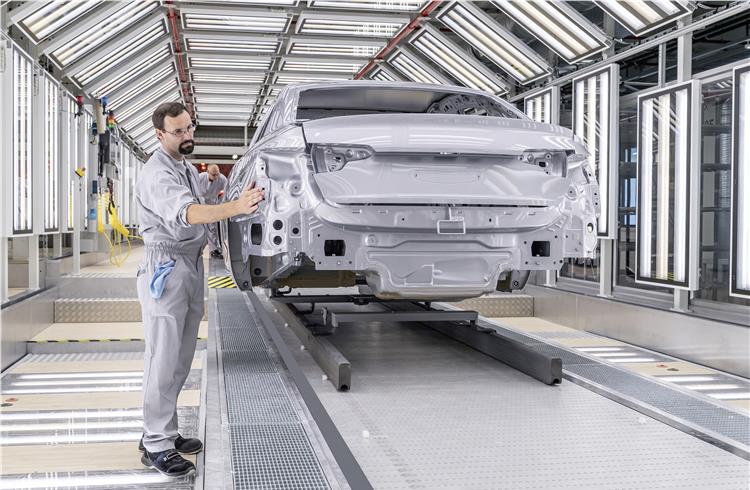
What Size Air Compressor Do I Need to Paint a Car?
Share
If you are a tech professional or a car enthusiast considering a DIY car painting project, you're probably wondering what size air compressor do I need to paint a car? Selecting the correct air compressor is vital to ensure a smooth and professional-looking finish.
Using a proper air compressor not only affects the quality of the paint job but also the time spent and the efficiency of your work. It's essential to understand the factors influencing your choice and how to choose the right machine that suits your painting needs.

Understanding Air Compressors
An air compressor works by storing air under pressure and releasing it when needed. It plays a critical role in spray painting, as the paint gun requires a consistent stream of compressed air to atomize the paint correctly. Without the right size air compressor, you may encounter issues such as:
- Inconsistent paint application
- Low pressure that affects the spray pattern
- Longer drying times
- Possible damage to your paint job
Key Features of a Suitable Air Compressor
When it comes to the question of what size air compressor do I need to paint a car, there are several key features you should consider:
- CFM Rating (Cubic Feet per Minute): This depicts how much air the compressor can deliver. For painting a car, you should look for a model that offers at least 10 CFM at 40 PSI.
- Tank Size:The size of the tanks generally ranges from 2 to 80 gallons. A minimum of 15 gallons is advisable, as it allows for a continuous air supply without needing to stop frequently for refilling.
- Compressor Type: There are two main typesa reciprocating air compressor and a rotary screw compressor. For occasional car painting, a reciprocating model usually suffices.
- Power Source: Electric compressors are more common due to their ease of use, but gas-powered versions are available for remote locations.
Estimating Your Requirements
Before committing to a purchase, you need to estimate your air compressor requirements based on:
- **The Type of Paint You Are Using:** Different types of paints require different air pressures to spray effectively.
- **The Spray Gun You Will Use:** Spray guns also vary in their air consumption. A high-volume, low-pressure (HVLP) spray gun usually requires less CFM than high-pressure (HP) guns.
- **Application Technique:** The way you apply paintwhether in broad strokes or detailed finishescan impact CFM requirements.
Calculating the Right Size
To determine the right size, start by checking the specifications given by your spray gun manufacturer regarding its CFM and pressure requirements. Using that information, you can match it with the output capability of potential air compressor models.
Choosing the Right Air Compressor Model
Some popular and reliable models in the market include:
- MotorTrend Painting Guide
- How Cars Are Painted
- Auto Paint Process
- History of Automotive Paint
- WikiHow Car Painting
Common Pitfalls to Avoid
While getting an air compressor, be on the lookout for:
- Underestimating CFM Needs: Choose a compressor that slightly exceeds your CFM requirements to allow for fluctuations.
- Ignoring Tank Size: Smaller tanks will require more frequent stops and could disrupt your painting workflow.
- Skipping Quality Check: Ensure that the compressor has good build quality to avoid breakdowns during essential tasks.
After the Painting Process
After painting your car, the air compressor can be useful for cleaning the area and performing other tasks, like inflating tires or powering pneumatic tools. You can also refer to articles on how to fix issues such as peeling paint on your car or learn< a href='https://iottechnologies.io/blogs/car-paint/how-to-sand-a-car-for-paint' style='color:blue'>how to sand a car for paint properly.

FAQ
1. What is the minimum CFM required for painting a car?
At least 10 CFM at 40 PSI is typically needed for spray painting a car effectively.
2. Can I use a small air compressor for painting?
Using a smaller compressor may result in inconsistency and poor paint coverage due to insufficient air supply.
3. How can I maintain my air compressor?
Regularly check oil levels (if applicable), drain the tank of moisture, and use a filter to prevent dirt and debris from entering the system.
